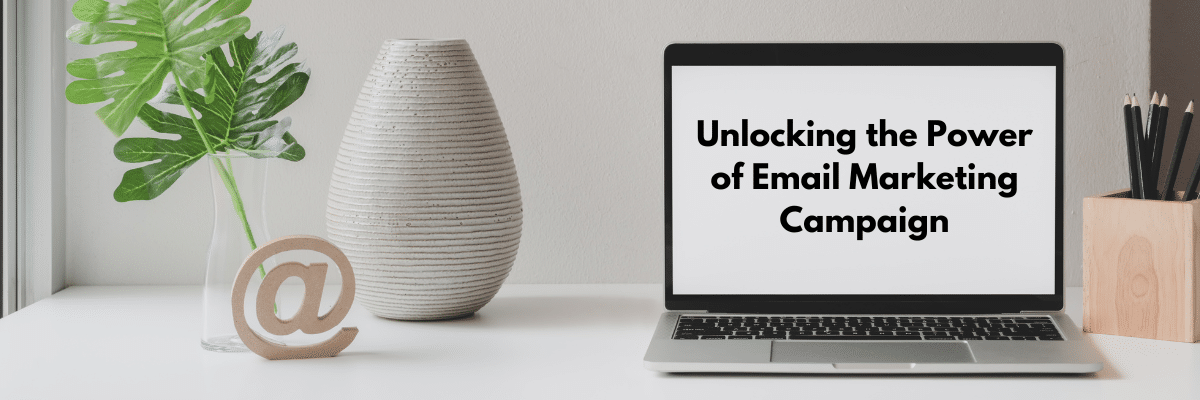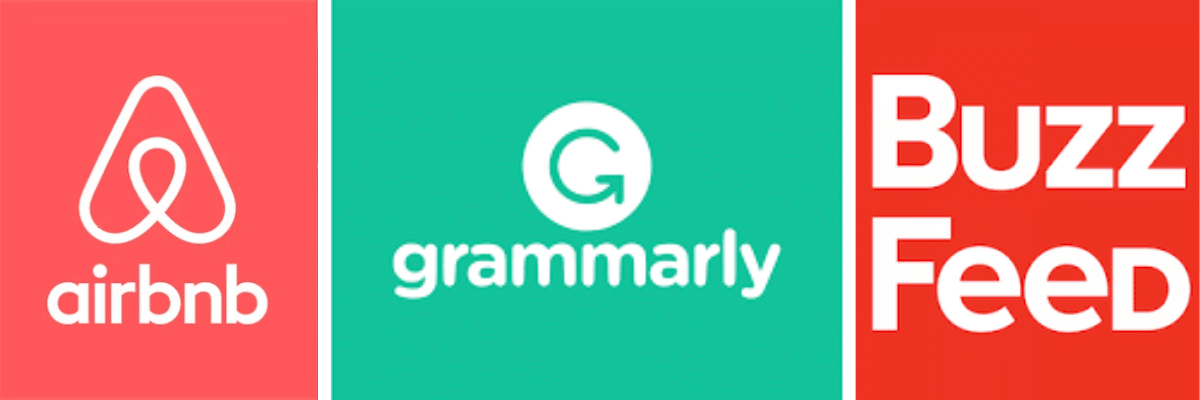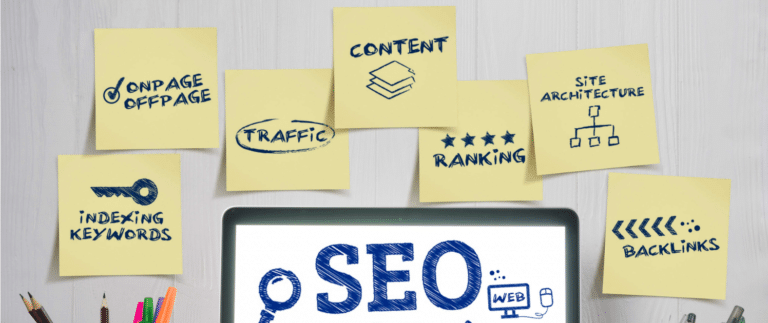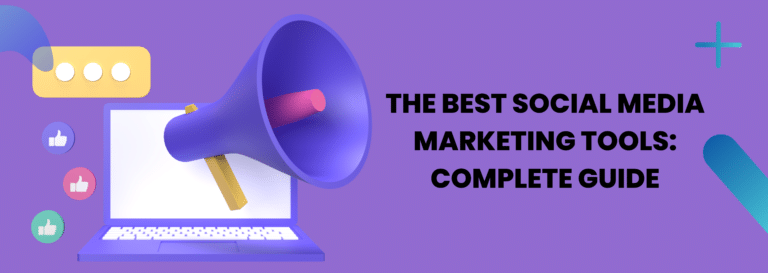Unlocking the Power of Email Marketing Campaign: Key Benefits for Businesses
Did you know that an email marketing campaign has an average ROI of $42 for every $1 spent? With such an impressive return on investment, it’s no wonder that email marketing remains one of the most popular and effective marketing channels for businesses of all sizes.
However, simply sending out emails to your subscribers is not enough. To achieve success with email and marketing efforts, it’s important to understand the types of campaigns available, the benefits they offer, and the best practices for creating and executing a successful campaign.
As the world continues to evolve and technology advances at a rapid pace, businesses must stay up-to-date with the latest marketing trends to stay ahead of the competition. One of the most effective tools in a business’s marketing arsenal is email marketing.
In this blog, we will explore the power of an email marketing campaign and the key benefits it can offer to businesses. We will also delve into strategies for creating an effective campaign, email marketing templates, examples of a successful campaign, and the dos and don’ts of an effective email marketing campaign.
So, whether you are just starting with email marketing or looking to improve your existing campaign, read on to unlock the full potential of this powerful marketing channel.
Table of Contents
- What is Email Marketing?
- Types of Email Marketing Campaigns
- Benefits of Email Marketing Campaigns for Businesses
- Strategies for Creating Successful Email Marketing Campaigns
- Examples of Successful Email Marketing Campaigns
- Best Practices for Email Marketing Campaigns
- The Dos and Don’ts of Email Marketing Campaigns
- Final Thoughts and Advice
- Frequently Asked Questions
What is Email Marketing?
Email marketing is a digital marketing strategy that involves sending targeted promotional messages, updates, and newsletters via email to a list of subscribers. It is a cost-effective and efficient way for businesses to communicate with customers, promote their products or services, and drive sales.
Email marketing can take many forms, such as welcome emails, promotional email signatures, emails, newsletters, abandoned cart emails, and more. The content of the emails can be personalized to each recipient, making the messages more relevant and engaging. By sending targeted emails to specific groups of subscribers, businesses can increase the chances of conversion and ROI.
Email marketing has the ability to measure and analyze your performance. Businesses can track open rates, click-through rates, conversion rates, and other metrics to gain valuable insights into how their subscribers are interacting with their emails. This data can be used to optimize email campaigns and improve overall performance.
It is an effective way for businesses to connect with their customers, build brand awareness, and drive sales. By creating personalized and relevant content, businesses can create a lasting impression with their subscribers and maintain a strong relationship with loyal customers over time.
Types of Email Marketing Campaigns
Email marketing is a versatile and effective way for businesses to connect with their customers and drive sales. There are various types of email marketing campaigns that businesses can use to achieve their marketing goals. Here are some of the most common types of email marketing campaigns:
1. Welcome Emails
Welcome emails are sent by email service providers to new subscribers as a way of introducing them to the brand and thanking them for signing up. They can include information about the brand’s products or services, links to social media profiles, or exclusive offers.
2. Promotional Emails
Promotional emails are used to promote products or services and encourage subscribers to make a purchase. They can include discounts, free shipping, or limited-time offers to entice subscribers to take action.
3. Newsletter Emails
Newsletter emails provide subscribers with regular updates on the brand’s latest news, events, and products. They can also include industry insights, helpful tips, or exclusive content.
4. Abandoned Cart Emails
Abandoned cart emails are sent to subscribers who have added items to their online shopping cart but have not completed the purchase. These emails can include a reminder of the purchase history for the items in the cart and an incentive to complete the purchase, such as a discount code.
5. Re-engagement Emails
Re-engagement emails are sent to inactive subscribers in an attempt to re-engage them with the brand. They can include exclusive offers, personalized content, or a survey to gather feedback.
6. Milestone Emails
Milestone emails are sent to subscribers to celebrate special occasions, such as birthdays or anniversaries. They can include personalized messages, exclusive offers, or free gifts.
7. Feedback Emails
Feedback emails are sent to subscribers to gather feedback on their experience with the brand. They can include a survey, personalized questions, or a request for a review.
Benefits of Email Marketing Campaigns for Businesses
A highly effective and cost-efficient digital marketing strategy, email marketing campaigns have numerous benefits. Here are some of its key advantages:
1. Increased Reach
Email marketing allows small businesses to reach a large audience quickly and easily. By sending emails to a list of subscribers, businesses can communicate with customers all over the world, regardless of their location or time zone.
2. Cost-Effective
Compared to other forms of digital marketing, email marketing is relatively low-cost. It requires minimal investment in terms of resources, equipment, or advertising fees, making it an affordable option for businesses of all sizes.
3. Personalized Messaging
Email marketing allows businesses to personalize their messages to each individual subscriber. By using data and analytics to segment their email lists, businesses can create targeted emails that are tailored to the interests and preferences of each subscriber.
4. Increased Engagement
By providing subscribers with personalized and relevant content, businesses can increase engagement and build stronger relationships with their existing customers. This can lead to increased brand loyalty, repeat business, and word-of-mouth referrals from email clients.
5. Measurable Results
Email marketing campaigns are highly measurable, allowing businesses to track open rates, click-through rates, conversion rates, and other metrics. This data can be used to analyze the performance of each email campaign and make informed decisions about future email marketing strategies together.
6,. Easy to Automate
Many email marketing campaigns can be easily automated, allowing businesses to save time and resources. Automated campaigns, such send emails such as welcome emails, abandoned cart emails, or milestone emails, can be set up once and then triggered based on specific actions or events.
7. Increased ROI
Email marketing campaigns can deliver a high return on investment (ROI) for businesses. By targeting specific groups of subscribers with personalized and relevant content, businesses can increase conversion rates and drive sales.
Strategies for Creating Successful Email Marketing Campaigns
Creating successful email marketing campaigns requires a strategic approach that considers the audience, message, and goals of the campaign. Here are some key strategies for creating successful email marketing campaigns:
1. Define Your Goals
Before creating an email marketing campaign, it is important to define your goals. Are you looking to increase sales, drive traffic to your website, or build brand awareness? Defining your goals will help you create targeted and effective email campaigns.
2. Know Your Audience
Understanding your audience is key to creating successful email campaigns. By segmenting your email list based on demographics, interests, and behaviors, you can create targeted campaigns that resonate with each group of subscribers.
3. Craft Compelling Subject Lines
Your email subject line itself is the first thing that subscribers see when they receive your email. Crafting compelling subject lines that are clear, concise, and attention-grabbing can increase open rates and engagement.
4. Personalize Your Content
Personalizing your email content can increase engagement and build stronger relationships with your subscribers. By using subscriber data and analytics, you can create personalized content that is tailored to each individual’s interests and preferences.
5. Use Eye-Catching Designs
Using eye-catching designs and graphics can make your email stand out in subscribers’ inboxes. It is important to ensure that your designs are visually appealing, on-brand, and optimized for mobile devices.
6. Include a Clear Call to Action
Including a clear call to action (CTA) in your email can increase click-through rates and drive conversions. Your CTA should be easy to find, relevant to the content of your email, and clearly communicate what action subscribers should take.
7. Test and Measure Your Campaigns
Testing and measuring your email campaigns can help you optimize your strategy and improve results. A/B testing subject lines, content, and designs can provide valuable insights into what resonates with your audience and improve performance over time.
Examples of Successful Email Marketing Campaigns
There are many examples of successful email and marketing automation campaigns that have achieved their goals and driven results for businesses. Here are a few notable examples:
Airbnb
Airbnb’s “Wish List” campaign targeted subscribers who had saved properties to their “wish list” on the Airbnb platform but had not yet booked a stay.
The campaign featured personalized recommendations based on each subscriber’s saved properties and included a clear call to action to encourage them to book their stay. The campaign resulted in a 30% increase in bookings and a 109% increase in revenue.
Grammarly
Grammarly’s “Onboarding” campaign aimed to onboard new subscribers and increase engagement with the Grammarly platform.
The campaign included a series of automated emails that provided personalized tips and insights to help subscribers get the most out of the platform. The campaign resulted in a 10% increase in user engagement and a 30% increase in subscription renewals.
Chubbies
Chubbies’ “Christmas” campaign featured a series of humorous and engaging emails that promoted holiday-themed products and encouraged subscribers to shop for gifts.
The campaign included eye-catching designs, personalized product recommendations, and a clear call to action. The campaign resulted in a 3.5x increase in revenue compared to the previous year’s holiday season.
BuzzFeed
BuzzFeed’s “Daily Newsletters” campaign targeted subscribers who had signed up to receive daily email newsletters featuring the latest news and trends.
The campaign featured engaging headlines, interesting content, and eye-catching designs that kept subscribers coming back for more. The campaign resulted in a 50% increase in open rates and a 55% increase in click-through rates.
Warby Parker
Warby Parker’s “Home Try-On” campaign aimed to encourage subscribers to try on glasses at home and make a purchase.
The campaign included a personalized quiz to help subscribers find the perfect frames, and a clear call to action to order a “Home Try-On” kit. The campaign resulted in a 20% increase in sales and a 12% increase in conversion rates.
Best Practices for Email Marketing Campaigns
Email marketing campaigns can be a highly effective tool for businesses to connect with their audience and achieve their marketing goals. To maximize the effectiveness of your email campaigns, here are some best practices to follow:
1. Build a Quality Email List
Building a quality email list is key to the success of your email marketing campaigns. You can build your list through opt-in forms on your website or by offering incentives for subscribers to sign up, such as discounts or exclusive content.
2. Segment Your Email List
Segmenting your email list based on demographics, interests, and behaviors allows you to create targeted campaigns that resonate with each group of email subscribers more. This can lead to higher engagement and more effective results.
3. Use a Clear and Compelling Subject Line
Your subject line is the first impression that subscribers have of your email, so it’s important to make it clear and compelling. A good subject line should be short, descriptive, and convey the value of your email.
4. Optimize Your Email for Mobile Devices
A majority of emails are now opened on mobile devices, so it’s important to ensure that your emails are optimized for mobile. This includes using a responsive design and keeping your email content short and scannable.
5. Personalize Your Email Content
Personalizing your email content can increase engagement and build stronger relationships with your subscribers. Use subscriber data and analytics to create personalized content that is tailored to each individual’s interests and preferences.
6. Include a Clear Call to Action
Including a clear call to action (CTA) in your email can increase click-through rates and drive conversions. Your CTA should be easy to find, relevant to the content of your email, and clearly communicate what action subscribers should take.
7. Test and Measure Your Campaigns
Testing and measuring your email campaigns can help you optimize your strategy and improve results. A/B testing subject lines, content, and designs can provide valuable insights into what resonates with your audience and improve performance over time.
The Dos and Don’ts of Email Marketing Campaigns
Email marketing campaigns can be an effective way to reach your target audience and achieve your marketing goals. However, it’s important to follow certain best practices and avoid common pitfalls to ensure that your campaigns are successful. Here are some dos and don’ts to keep in mind when creating email marketing campaigns:
Dos:
- Do personalize your emails. Using a subscriber’s name, location, or other relevant information can help to build a connection with them and increase engagement.
- Do make sure your emails are optimized for mobile devices. Many subscribers read emails on their phones, so your email should be easy to read and navigate on a smaller screen.
- Do segment your email list. By grouping subscribers based on their interests or behaviors, you can create targeted campaigns that are more likely to resonate with them.
- Do include a clear call to action (CTA) in your emails. Your CTA should be specific and encourage subscribers to take a desired action, such as making a purchase or signing up for a free trial.
- Do test and measure your campaigns. A/B testing subject lines, content, and designs can help you determine what works best with your audience and improve your results over time.
Don’ts:
- Don’t buy email lists. Purchasing email lists can lead to low engagement rates, high unsubscribe rates, and damage to your brand’s reputation.
- Don’t send too many emails. Bombarding subscribers with too many emails can lead to unsubscribes and a negative perception of your brand.
- Don’t use spammy tactics. This includes using misleading subject lines, sending unsolicited emails, or using deceptive tactics to get subscribers to open your emails.
- Don’t neglect your email content. Your email content should be engaging, informative, and relevant to your audience.
- Don’t forget to comply with anti-spam laws. Make sure to include an unsubscribe link in your emails, honor unsubscribe requests promptly, and follow all applicable laws and regulations.
Final Thoughts and Advice
In conclusion, email marketing campaigns continue to be highly effective tools for businesses to connect with their audience and drive results. By following best practices such as personalizing content, optimizing for mobile devices, segmenting your audience, and including clear calls to action, businesses can create effective campaigns that resonate with their subscribers.
However, it’s important to also avoid common mistakes such as buying email lists, using spammy tactics, neglecting email content, and neglecting compliance with anti-spam laws.
Overall, with careful planning and execution, email marketing campaigns can be a powerful tool for businesses to achieve their marketing goals and drive success.
Frequently Asked Questions
What is an email marketing campaign?
An email marketing campaign is a marketing strategy that involves sending promotional or informational messages to a group of people via email. The goal of an email marketing campaign is to engage and nurture the audience, build brand awareness, and ultimately drive desired actions such as a purchase or a signup form take-up.
Do email marketing campaigns work?
Yes, email marketing campaigns can be highly effective when executed correctly. According to a study by HubSpot, the right email marketing strategy drives an average ROI of $42 for every $1 spent, making it one of the most cost-effective marketing channels available.
What does an email marketer do?
An email marketer plans and executes email marketing campaigns to promote a company’s products or services. Their responsibilities include creating email content, designing email templates and, managing email lists, analyzing performance for future campaigns, and optimizing campaigns for better results.
What are the 3 types of email marketing?
The three main types of email marketing are promotional emails, informational or educational emails, and behavioral or triggered emails. Promotional emails aim to promote a specific product or service, informational emails provide value to subscribers, and behavioral emails are triggered by a specific action taken by the subscriber.
What is an email marketing strategy?
An email marketing strategy is a plan that outlines how a business will use an email marketing tool to achieve its marketing goals. It involves defining the target audience, setting objectives, creating relevant email content, and measuring campaign performance. The goal is to build brand awareness, increase engagement, and drive desired actions.
What are the four P’s of successful strategy email?
The four P’s of a successful email marketing strategy are planning, personalization, promotion, and performance.
How much does an email ad campaign cost?
A mid-sized company can expect to spend $9-1000 monthly on email marketing depending upon the platform and the number. The cost of a contract could range in value between $300 – $500 a month.
What are the 3 main steps in email marketing?
The three main steps in winning an email marketing strategy are creating a targeted email list, developing engaging email content, and analyzing campaign performance. These steps involve identifying the target audience, segmenting the list, creating personalized content, and tracking metrics such as open and click-through rates to evaluate the effectiveness of the campaign.
What are the 5 focus areas of effective email marketing?
The five focus areas of an effective email marketing strategy are targeting the right audience, crafting engaging email subject lines, creating compelling email content, incorporating calls-to-action (CTAs), and analyzing campaign performance.
What is the best way to build an email strategy?
The best way to build an email strategy is to start with clear objectives, identify the target audience, segment the email list, create engaging and personalized content, incorporate calls-to-action, and continuously track and analyze campaign performance.
What are the top 3 email list-building strategies?
The top three email list-building strategies include offering an incentive such as a free download or discount code in exchange for email sign-ups, using social media to promote the email list and encourage sign-ups, and leveraging partnerships or collaborations with other businesses to reach new audiences and expand the customer data email list.









